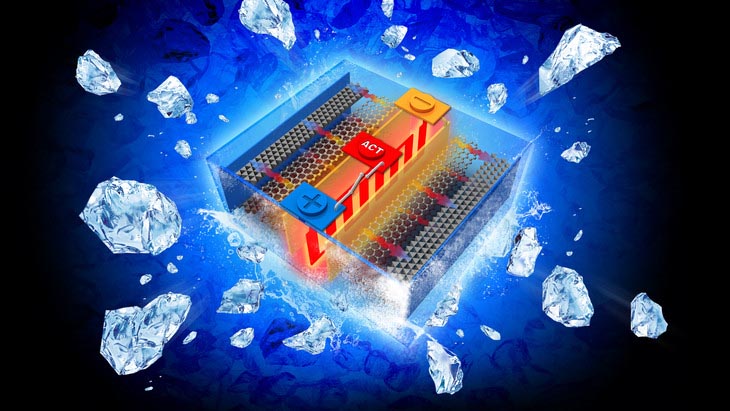Paul Buckley
EE Times
A team of researchers from Penn State University and EC Power, State College have developed a lithium-ion battery that self heats if the temperature is below 0 degrees C which will help relieve winter 'range anxiety' for electric vehicle owners.
"It is a long standing problem that batteries do not perform well at subzero temperatures," said Chao-Yang Wang, William E. Diefenderfer Chair of mechanical engineering, professor of chemical engineering and professor of materials science and engineering and director, Electrochemical Engine Center. "This may not be an issue for phones and laptops, but is a huge barrier for electric vehicles, drones, outdoor robots and space applications."
 |
| Chao-Yang Wang, Professor and Diefenderfer Chair. |
Conventional batteries at below freezing temperatures suffer severe power loss, which leads to slow charging in cold weather, restricted regenerative breaking and reduction of vehicle cruise range by as much as 40 percent, the researchers pointed out in the journal Nature. The problems require larger and more expensive battery packs to compensate for the cold sapping of energy.
 |
| An all-climate battery that rapidly self-heats battery materials and electrochemical interfaces in cold environments. (Image: Chao-Yang Wang / Penn State). |
"We don't want electric cars to lose 40 to 50 percent of their cruise range in frigid weather as reported by the American Automobile Association and we don't want the cold weather to exacerbate range anxiety," said Wang. "In cold winters, range anxiety is the last thing we need."
The researchers, relying on previous patents by EC Power, developed the all-climate battery to weigh only 1.5 percent more and cost only 0.04 percent of the base battery. The researchers also designed the battery to go from –20 to 0 degrees C within 20 seconds and from –30 to 0 degrees C in 30 seconds and consume 3.8 percent and 5.5 percent of the cell's capacity. This is far less than the 40 percent loss in conventional lithium ion batteries.
The all-climate battery uses a nickel foil of 50-micrometer thickness with one end attached to the negative terminal and the other extending outside the cell to create a third terminal. A temperature sensor attached to a switch causes electrons to flow through the nickel foil to complete the circuit. This rapidly heats up the nickel foil through resistance heating and warms the inside of the battery. Once the battery is at 0 degrees C, the switch turns off and the electric current flows in the normal manner.
While other materials could also serve as a resistance-heating element, nickel is low cost and works well.
"Next we would like to broaden the work to a new paradigm called SmartBattery," said Wang. "We think we can use similar structures or principles to actively regulate the battery's safety, performance and life."